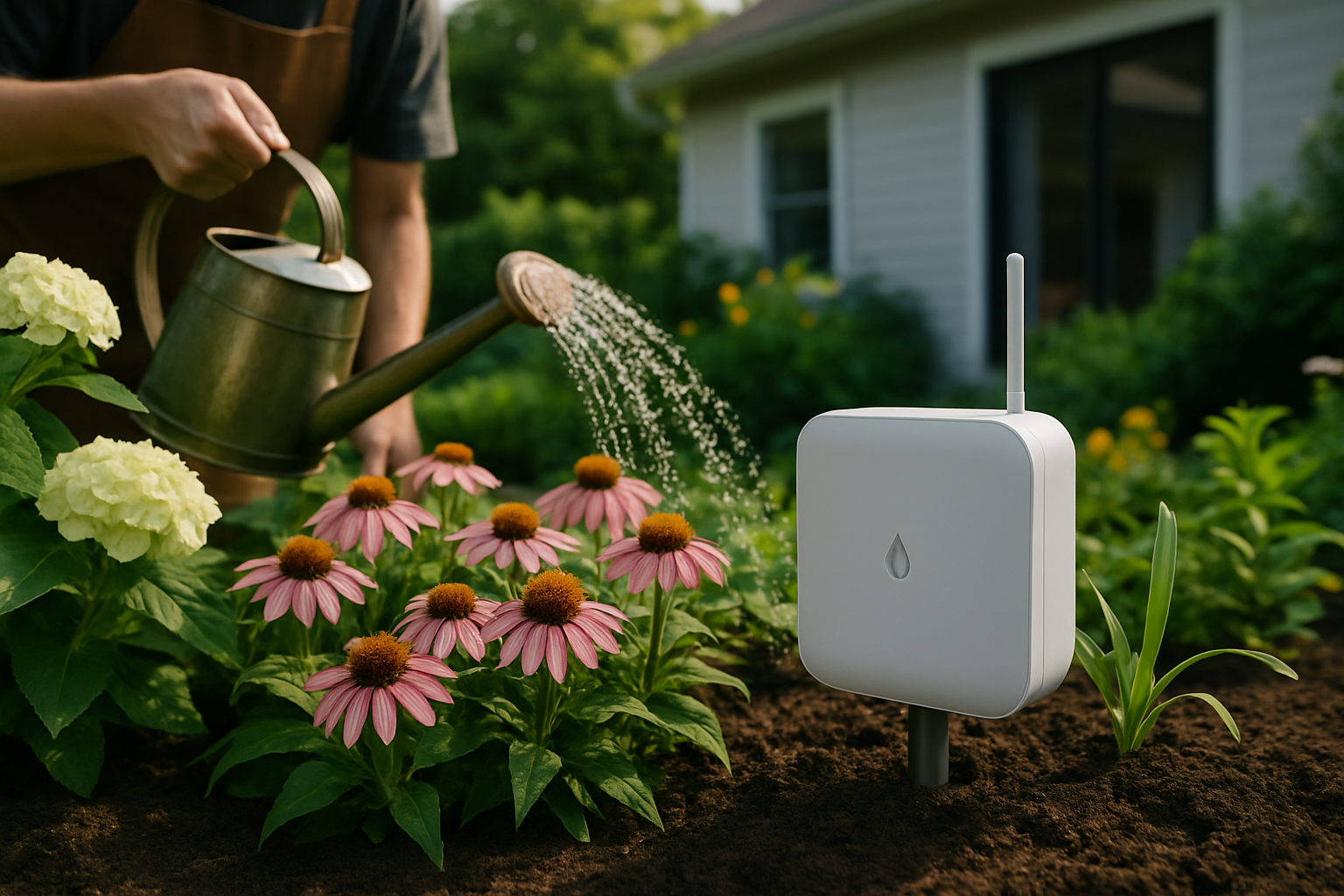How Smart Irrigation Systems Use Weather Data and Sensors for Efficient Water Use in the United States 2025
Nearly 50% of residential outdoor water use in the United States is wasted due to inefficient irrigation. Smart irrigation systems combine local weather data and advanced sensors to optimize watering, conserve water, and improve landscape health. This article explains how these technologies work together.

Understanding Smart Irrigation Systems
Smart irrigation systems are designed to automate and optimize watering schedules based on real-time environmental information. Unlike traditional clock-based controllers, smart systems integrate multiple types of data—including local weather conditions and direct soil moisture readings—to tailor irrigation precisely to the needs of plants.
The core principle behind these systems is to water landscapes only when necessary, preventing the waste of water through over-irrigation or runoff. This approach benefits residential, commercial, and agricultural landscapes by conserving water, reducing costs, and supporting sustainable landscaping practices.
The Role of Weather Data in Irrigation Optimization
Weather plays a crucial role in determining how much water a landscape requires. Smart irrigation systems use local meteorological data such as temperature, humidity, rainfall, and wind speed to calculate irrigation needs. Key components include:
-
Weather-based Controllers: These automatically adjust watering schedules based on current weather conditions. For example, if rain is detected or forecast, the system will reduce or skip watering cycles to prevent unnecessary application.
-
Evapotranspiration (ET) Data: ET sensors track water loss from soil and plants caused by evaporation and transpiration. This data enables controllers to dynamically adjust irrigation based on how much moisture has been lost, ensuring plants receive only the water they need for optimal health.
Incorporating weather data helps systems respond to sudden changes, such as storms or dry spells, maintaining landscape efficiency without manual intervention.
How Sensors Enhance Water Use Efficiency
Sensors are integral to smart irrigation technologies, feeding precise environmental measurements into irrigation controllers:
-
Soil Moisture Sensors: These detect the actual moisture level in the soil, preventing irrigation when soil conditions are sufficiently hydrated. This helps avoid overwatering and saves water by tailoring irrigation to real-time soil status.
-
Rain Sensors: Rain sensors detect precipitation events and pause irrigation during or immediately after rainfall, reducing water waste.
-
Flow Sensors and Master Valves: Flow sensors monitor water flow continuously to detect leaks or abnormal usage in the system. When leaks are found, master valves can automatically shut off the water supply to prevent excessive water loss and protect the landscape.
Together, these sensors allow for accurate monitoring and quick responses to prevent water wastage and maintain system reliability.
System Design Features That Complement Data-Driven Irrigation
Beyond sensors and weather data, smart irrigation performance is enhanced by thoughtful system design:
-
Drip Irrigation: Delivering water directly to the plant root zone via drip emitters minimizes evaporation and runoff, improving water efficiency.
-
Zoning by Plant Water Needs: Grouping plants with similar water requirements into irrigation zones prevents overwatering of drought-tolerant species or underwatering of water-loving plants. Proper zoning supports tailored irrigation that aligns with plant types and soil conditions.
-
Rotary Spray Nozzles: These apply water slowly and uniformly, increasing infiltration and reducing runoff compared to traditional spray heads.
Such features work hand-in-hand with real-time data to optimize landscape watering comprehensively.
Real-Time Automation Reduces Waste and Labor
The hallmark of smart irrigation technology is its ability to automate watering schedules responsively:
-
Controllers adjust irrigation timing and duration instantly based on sensor data and weather inputs, eliminating the need for manual adjustments.
-
This automation helps avoid watering during unsuitable conditions such as precipitation or high humidity and prevents drought stress during dry periods.
-
As a result, plants receive water when and only when they need it, promoting healthier landscapes and significant water conservation.
Automation also reduces labor costs and human error, making landscape management more efficient.
Water Conservation and Economic Benefits in the United States
Smart irrigation systems contribute substantially to water savings across multiple sectors:
-
Residential Use: Homeowners typically save between 20% to 50% on outdoor water use by adopting smart irrigation controllers.
-
Commercial Properties: Parks, golf courses, and schools often achieve water reductions ranging from 30% to 60%, translating to millions of gallons saved annually.
-
Agriculture: Farms see water savings of 10% to 40%, improving crop yield resilience while conserving a critical resource.
Efficient irrigation also reduces energy consumption by decreasing pump operation time—industry estimates indicate energy savings up to 30% with smart systems. Along with lowering utility bills, improved landscape health reduces replacement and maintenance costs for plants affected by improper watering.
Maintaining Optimal Performance: The Importance of Water Audits
Regular water audits are recommended to sustain the efficiency of smart irrigation systems:
-
Audits help identify leaks, broken equipment, or inefficient irrigation zones allowing for timely repairs and adjustments.
-
Similar to a vehicle tune-up, these check-ups improve water use efficiency and help prevent costly breakdowns.
-
Property owners considering smart upgrades or refining existing systems benefit greatly from professional audits to ensure technology operates at peak performance aligned with changing environmental conditions.
The Future of Smart Irrigation in the United States
As water scarcity concerns continue to grow nationwide, smart irrigation systems are becoming essential tools for sustainable landscape management. Ongoing technological advancements—such as improved sensor accuracy, enhanced connectivity via Wi-Fi, and integration with weather forecasts—will increase system responsiveness and accessibility.
By adopting smart irrigation technologies, landscape owners can support environmental stewardship, reduce resource waste, and promote vibrant, healthy landscapes now and into the future.
Sources
- United States Environmental Protection Agency (EPA). “WaterSense Labeled Controllers.”
- University of California Agriculture and Natural Resources (UCANR). “Smart Irrigation Controllers and Their Importance in Water Conservation.”
- Yellowstone Landscape. “Smart Irrigation: Water Conservation and Efficiency.”
Disclaimer: Water savings, energy reductions, and economic benefits mentioned in this article may vary depending on regional climate, system design, and proper installation. Consumers should verify details with local providers and consider site-specific factors when evaluating irrigation technologies.




